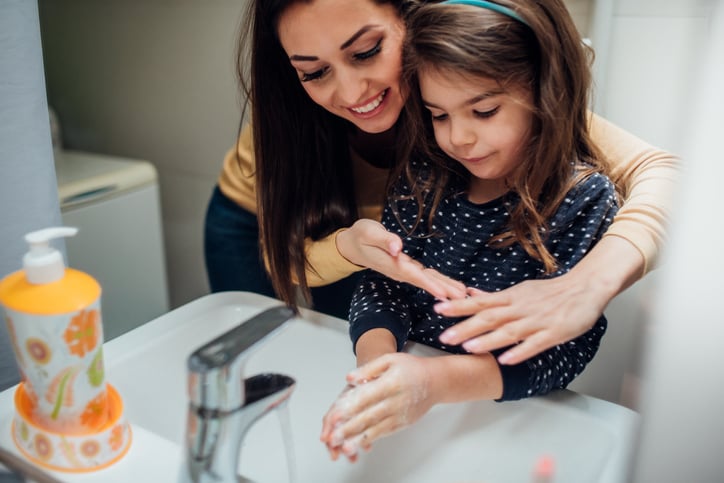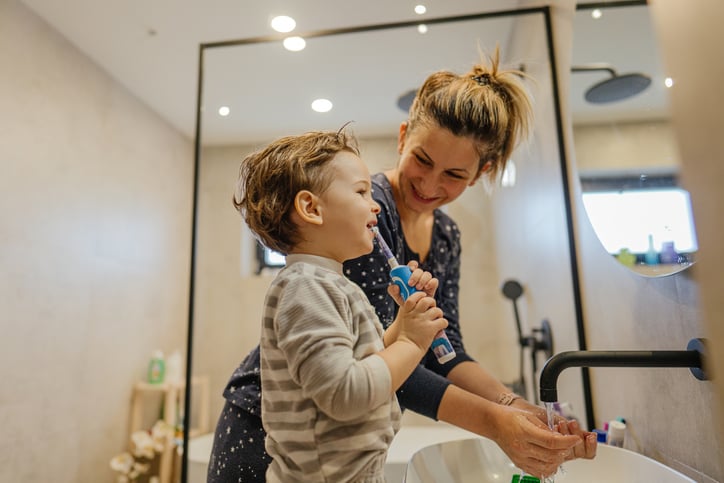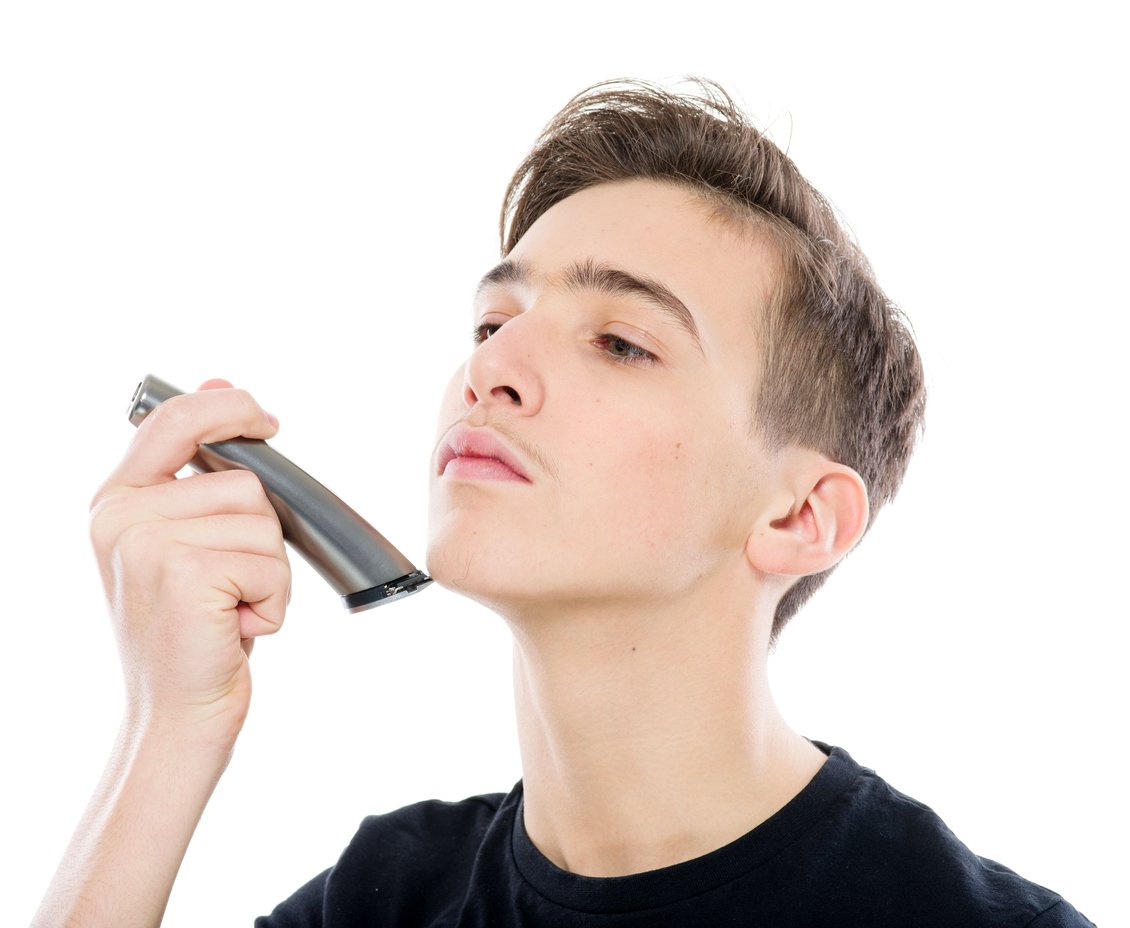Hygiene vs. Autism: Common Challenges and Possible Adaptations
How can caregivers identify and mitigate autism-related challenges to promote hygiene adherence in youth?
Teaching and enforcing hygiene habits is crucial for the health and social wellness of all children, especially as they physically mature into their teenage years. For autistic children and teens, however, self-care tasks of teeth brushing, showering, hair grooming, and body odor management can be an overwhelming and frustrating experience.
Neurodivergent youth may not feel motivated or comfortable with performing daily hygiene activities due to challenges with sensory sensitivities, executive functioning, demand avoidance, social motivation, or typical youth opposition. As a result, it is the responsibility of caregivers to observe, communicate, and collaborate with autistic individuals to develop consistent hygiene habits.
Learning about common autism-related challenges and their applicable tips can help meet the universal need for both physical health and social acceptance while tailoring to the individual’s developmental level, ability, and situation.
Sensory Sensitivities: Modify and Adapt
One of the easier hygiene barriers to identify, and potentially solve, is sensory sensitivity.3 This is most often manifested through heightened or dulled responses to stimuli such as loud sounds, strong smells, or bright lights. Concurrently, these sensory differences can deter young autistic individuals from engaging in overly stimulating activities of daily living.
Determining if this is the source of hygiene resistance and identifying possible accommodations involves both observation and experimentation. Parents can start by testing different water temperatures, scented or unscented products, tool textures, room lighting, or music integrations to find a method that causes the least discomfort.
In addition to these modifications, some stepping-stone adaptations can be made to initially achieve the minimum health benefits before working towards larger goals. This can include increasing task efficiency to decrease exposure time or starting with very minimal task frequencies. For example, if the starting goal is showering or teeth brushing once a week, then possible tasks for the other six days can be the less stimulating use of mouthwash, dry shampoo, or wipes before moving towards more sustainable and ideal practices.

Executive Functioning Challenges: Model and Schedule
Time management, planning, organization, working memory, and task completion are executive functioning domains that may be impaired in autistic youth.6
For young children, this challenge may manifest itself through difficulty with remembering or following steps for activities like hand washing. Helpful tools to generate task understanding and application include prompting, visual task education, tangible reminders, and video modeling. Integrating self-care habits into schedules and routines can also help make task performance more automatic for children.
For teenagers, their need for hygiene increases at the same time their general responsibilities increase as well. Scheduling and managing their time can be extremely distressing when balancing school attendance, assignments, therapies, chores, and the developmental need for more rest. Assistance for this area can consist of creating realistically feasible schedules, arranging hygiene items in order of logical use, and identifying the most optimal time frames to engage in self-care.
Demand Avoidance: Compromise and Calm
Demand avoidance for autistic individuals is exactly what the moniker implies, it’s the avoidance of demands due to anxiety, disinterest, or the pressure that the demand creates.4 “Demands'' is a broad and subjective term. For autistic people, each step that makes up a task could be its own demand, such as showering having the respective multiple demands of turning the water on, hair washing, lathering, drying, hair combing, and towel hanging. This demand perception can make tasks, that are neurotypically perceived as “simple”, overly anxiety-inducing.
A similar phenomenon called “autistic inertia” is defined by an inability or difficulty with starting, stopping, or transitioning tasks.1 Since both autism and these symptom manifestations are inherently based on anxiety, they need to be empathetically addressed with stress levels being prioritized as well as hygiene and health needs.
For that reason, compromises, meticulous schedule creation, and anxiety management are some of the best strategies. The approach of customizing a schedule based on input from, or observation of, the autistic individual not only provides them with more control but can also provide insights into their energy levels throughout the day so tasks can be planned accordingly. Of course, this may also mean negotiating self-care frequencies based on their anxiety levels and self-communicated bandwidth; they may be able to peacefully manage teeth brushing once a day, flossing once a week, or hair combing every other day, to begin with before habituating to more occurrences.
Anxiety is also something that all children, teens, and young adults experience, but autistic individuals may externalize or internalize it differently than their peers. Therefore, coping skills, breaks, negotiated habit practices, observation, and communication are essential for managing anxiety and hygiene.

Social Motivation Absence: Reward and Reinforce
Children of all neurotypes may not understand or agree with the need for hygiene, whether it’s for health maintenance or social importance. Autistic youth may share similar sentiments and consequently not comply with hygiene requests like nail trimming or deodorant use. As a result, they may need alternative sources of motivation.
Positive reinforcement, reward systems, and concrete encouragement can act as substitute motivators that can be gradually phased out as they develop habits. Additionally, autistic children need to understand that it’s okay to not agree with the need for shaving or changing clothes, but, they still need to accept the need and complete the activities regardless.
Intentional Opposition: Accountability and Discipline
Autism and individual mental health status can partially explain behaviors relating to attention-seeking, aggression, resistance, or the related manifestation of oppositional defiant disorder (ODD). ODD, while not a direct result of autism, can at times accompany related neurodiverse conditions through its respective symptomology of aggressive behaviors and severe authority noncompliance.2 Autism, ODD, and other conditions can undoubtedly help explain hygiene or behavioral resistance, but it can be dangerous to attribute, or potentially excuse, every action on the basis of autism since neurodivergence does not make individuals impervious to typical childhood misbehavior. Autism can impact a child’s level of understanding or behavioral abilities, but it remains universally essential to enforce responsibility for the behaviors autistic children are capable of understanding.
Young autistic individuals may intentionally choose not to engage in self-care habits out of rebellion, a shortage of formal enforcement, or attention conditioning. For instance, they may understand that each time they skip teeth brushing their parents comment on the resulting breath odor that the autistic individual may find comical and therefore enjoyable. Alternatively, if caregivers don’t enforce accountability with health habits the individual is capable of performing, then they may learn that they can skip those activities without consequence thus breeding stubborn defiance.
Although it may be difficult, it is possible and necessary to compassionately apply formal discipline procedures to encourage self-care tasks and minimize long-term indulgence. This involves the consistent application of developmentally appropriate consequences for intentional refusals to complete hygiene activities. However, caregivers should be mindful to not punish autistic children or teens for actions caused by something beyond their control, such as sensory sensitivity. Instead, those instances can be opportunities to teach coping skills and calming strategies for the future.

Individualizing Hygiene Approaches for Autistic People
Every autistic individual approaches hygiene differently, with challenges waxing and waning as they develop, but the ultimate goal is to collaborate with them to create sustainable independence.
It’s natural and common for caregivers to make assumptions about the source or motive behind their autistic child’s self-care resistance, such as “acting out” or “laziness,” but oftentimes there are more complex explanations. For this reason, adults need to empathize with their autistic children to understand why they may feel resistant to hygiene tasks and collaborate on adapting solutions.
This process may take significant amounts of time and troubleshooting, but small goals along the way can keep families motivated as their children progress from weekly showers and teeth brushing to daily practices.
How do you teach and encourage hygiene habits for your child? Share your experiences and insights in the comments section below.
We hope you enjoyed the information in this article. STAGES® Learning also offers free downloadable resources to support teaching and learning with autistic individuals. Start with our free Picture Noun Cards and see our collection of other downloadable resources here!
References
- Buckle KL, Leadbitter K, Poliakoff E, Gowen E. "No Way Out Except From External Intervention": First-Hand Accounts of Autistic Inertia. Front Psychol. 2021 Jul 13;12:631596. doi: 10.3389/fpsyg.2021.631596. PMID: 34326790; PMCID: PMC8314008. https://www.ncbi.nlm.nih.gov/pmc/articles/PMC8314008/
- Johns Hopkins Medicine. (n.d.). Oppositional defiant disorder (ODD) in children. Retrieved October 25, 2022, from https://www.hopkinsmedicine.org/health/conditions-and-diseases/oppositional-defiant-disorder
- National Autistic Society. (2020, August 20). Keeping healthy. Retrieved October 25, 2022, from https://www.autism.org.uk/advice-and-guidance/topics/physical-health/keeping-healthy
- PDA Society. (n.d.). What is demand avoidance? Retrieved October 25, 2022, from https://www.pdasociety.org.uk/what-is-pda-menu/what-is-demand-avoidance/
- Rudy, L. J. (2022, April 15). Why Children With Autism Deserve Rules and Discipline. Verywell Health. https://www.verywellhealth.com/why-children-with-autism-deserve-rules-and-discipline-260156
- Willoughby, B. (n.d.). Executive functioning explained. The Asperger / Autism Network (AANE). https://www.aane.org/executive-functioning-explained/

Amairani Asmad
Amairani Asmad is a freelancer with a Bachelor of Science degree in Rehabilitation and Human Services from Penn State. Her passion for helping people is motivated by her own experiences as a member and advocate of several marginalized communities. Amairani enjoys the positive impact of writing inclusive content and helping others using her education, personal experiences, and compassionate lens. Her goal is to continue learning while integrating her empathetic support for Neurodivergent, LGBTQIA+, and Latinx communities.





